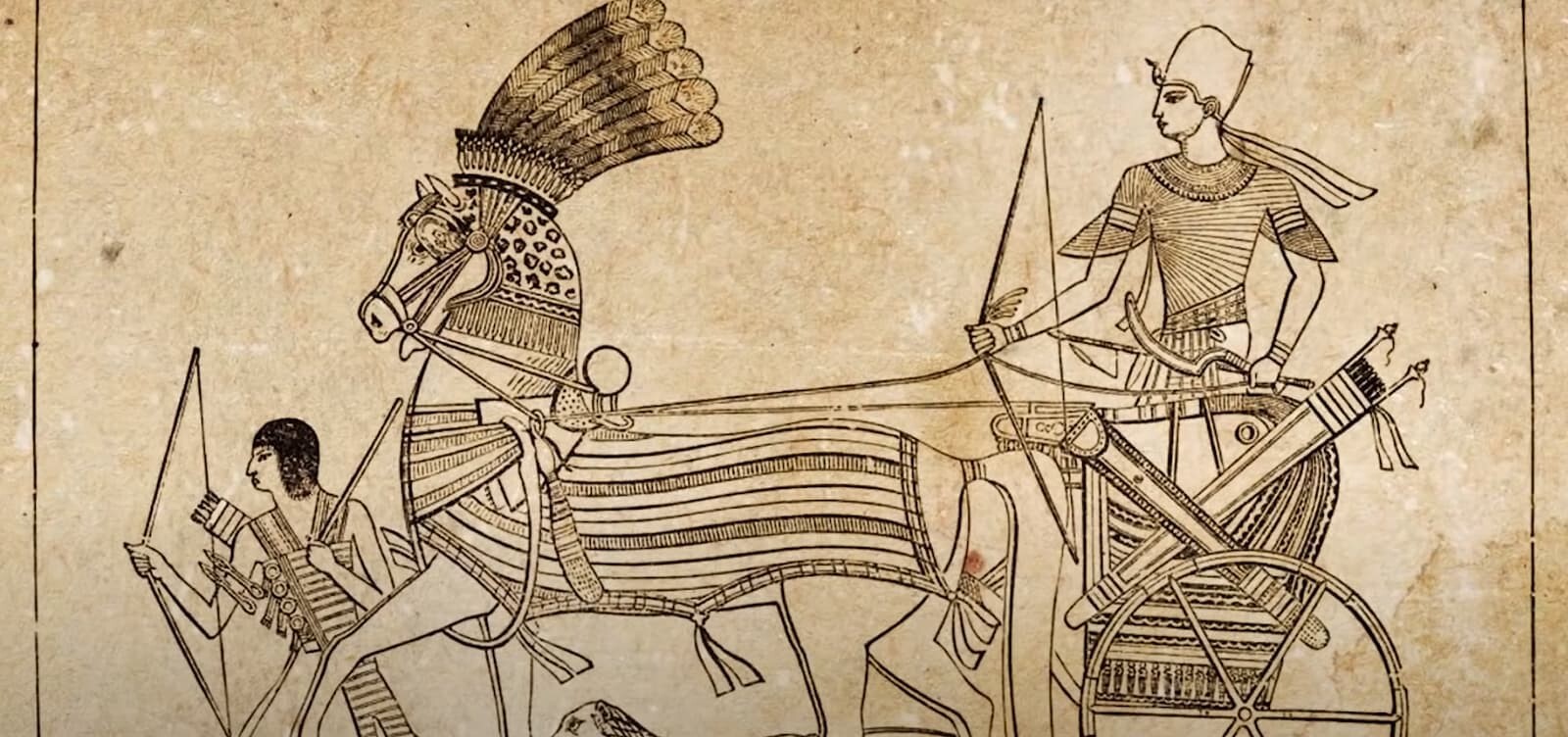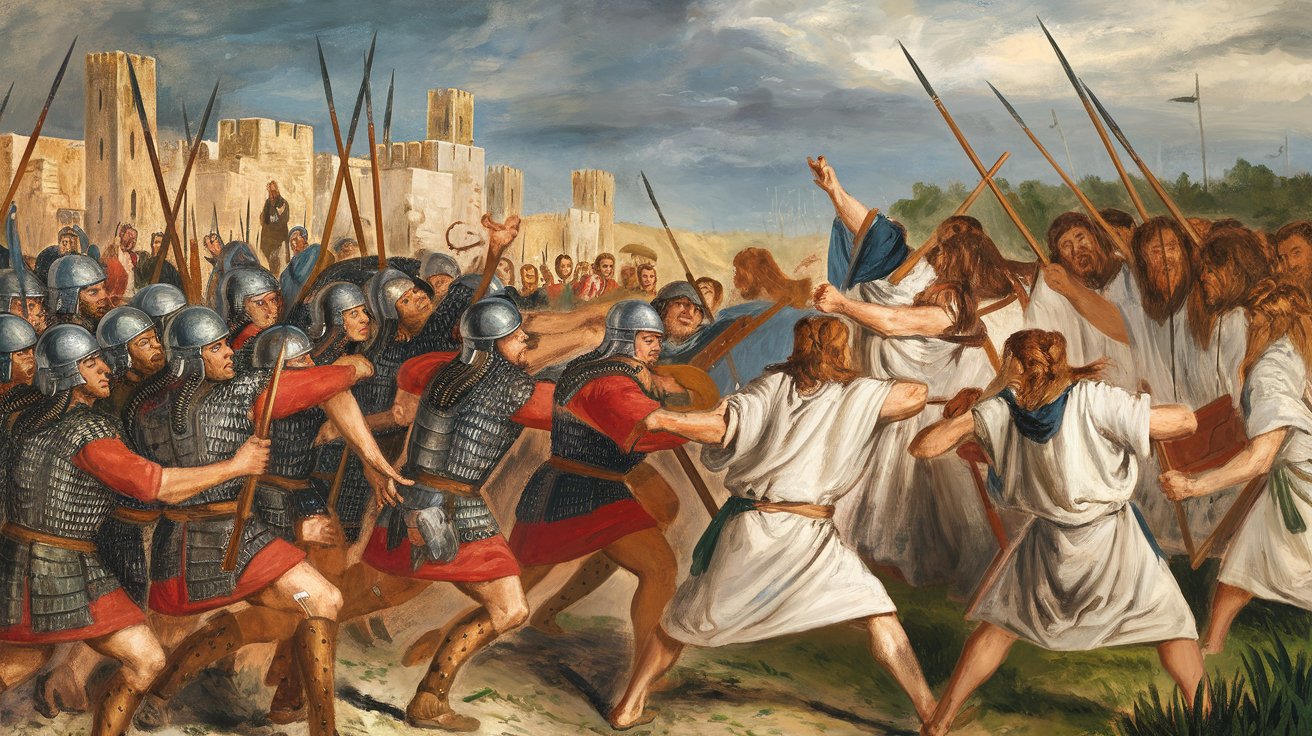
What were the Wars of Succession in the 19th Dynasty of Egypt? The 19th Dynasty of Egypt, spanning from 1292 BC to 1189 BC, was a period marked by significant military campaigns, cultural achievements, and intense internal conflicts. Known as the Ramesside period, this era saw powerful pharaohs like Ramesses II and Seti I. However, the dynasty was also plagued by wars of succession, fierce rivalries, and palace infighting. These conflicts often erupted after the death of a pharaoh, leading to power struggles among heirs and nobles. These wars weakened Egypt's external power and destabilized its internal structure, creating a competitive and decentralized society. Despite these challenges, the 19th Dynasty left a lasting legacy in Egyptian history.
Key Takeaways:
- The 19th Dynasty of Egypt, known as the Ramesside period, was marked by intense succession wars, leading to internal conflicts and the rise of powerful nobles, ultimately weakening Egypt's external power.
- Despite the internal conflicts, the 19th Dynasty saw significant cultural and religious achievements, with pharaohs commissioning striking reliefs and maintaining their role as divine rulers, ensuring the continued worship of the gods.
Founding of the 19th Dynasty
The 19th Dynasty of Ancient Egypt, known as the Ramesside period, was a time of great military campaigns, cultural achievements, and internal conflicts. Let's dive into the fascinating facts about the wars of succession that shaped this era.
-
The 19th Dynasty was founded by Vizier Ramesses I, chosen by Pharaoh Horemheb as his successor, marking a new era in Egyptian history.
-
Ramesses I ruled for only two years (1292–1290 BC) but laid the groundwork for future successes. He was buried in KV16 in the Valley of the Kings.
Seti I's Reign
Seti I, the son of Ramesses I, continued his father's legacy with notable military campaigns and cultural contributions.
-
Seti I ruled from 1290 to 1279 BC, reasserting Egypt's authority over the weakened empire in the Middle East.
-
He fought against the Mitanni state, secured coastal cities, and gained control of Kadesh, setting the stage for future military operations.
-
Seti I’s reign is remembered for prosperity and cultural achievements, including the restoration of monuments defaced during the Amarna period.
Ramesses II's Era
Ramesses II, one of the most famous pharaohs, ruled for 66 years and left a lasting legacy through his military campaigns and monumental constructions.
-
Ramesses II relocated the capital from Thebes to Pi-Ramesses, a new city in the delta, which led to the priests of the Cult of Amun gaining significant authority.
-
He is renowned for the Battle of Kadesh against the Hittites, although Egypt only temporarily controlled part of the north Syrian plain.
-
Despite the temporary control, his reign saw significant military achievements and the establishment of a treaty with the Hittites.
Merneptah and Internal Conflicts
Merneptah, the thirteenth son of Ramesses II, faced fierce rivalry from his heirs, driving the dynasty into chaos.
-
Merneptah ruled from 1213 to 1203 BC, with his reign marked by internal conflicts and the beginning of the dynasty's decline.
-
Seti II, Merneptah's son, ruled from 1203 to 1197 BC, also plagued by internal conflicts and the rise of different factions vying for power.
-
Amenmesse, another son of Merneptah, briefly ruled from 1201 to 1198 BC, intensifying the rivalry with Seti II and further destabilizing the kingdom.
Siptah and Twosret
The later years of the 19th Dynasty saw minor pharaohs and a female ruler, reflecting the dynasty's instability.
-
Siptah, originally known as Sekhaienre Meryamun, ruled from 1197 to 1191 BC, marked by significant instability and the rise of powerful nobles.
-
Twosret, the last pharaoh of the 19th Dynasty, ruled from 1191 to 1189 BC, notable for being one of the few female pharaohs in Egyptian history.
Succession Wars and Their Impact
The succession wars during the 19th Dynasty had profound effects on Egyptian society, leading to the rise of powerful nobles and a decentralized society.
-
The intense rivalry between heirs, especially after Ramesses II's death, led to significant palace infighting and the kingdom's destabilization.
-
This internal conflict weakened Egypt's external power, creating an environment ripe for future challenges.
-
The rise of powerful nobles vying for control created a competitive society, further exacerbated by the decline of Egypt’s hegemony in the ancient Mediterranean.
Cultural and Religious Achievements
Despite the internal conflicts, the 19th Dynasty saw significant cultural achievements and continued religious practices.
-
The Ramesside period is characterized by refined decoration, classicizing tendencies, and an explosion of documentation.
-
Pharaohs like Seti I and Ramesses II commissioned striking reliefs showing stages of their campaigns, preserved in notable sites like the great hypostyle hall at Karnak.
-
The pharaohs maintained their role as divine rulers, ensuring the continued worship of the gods and the performance of rituals necessary for maintaining cosmic order.
Burials in the Valley of the Kings
Many pharaohs of the 19th Dynasty were buried in the Valley of the Kings, reflecting the importance placed on the afterlife in ancient Egyptian culture.
-
Seti I was buried in KV17, one of the most impressive tombs, featuring detailed reliefs showing stages of his campaigns.
-
Ramesses II was buried in KV7, famous for its elaborate decorations and the discovery of his mummy, providing insights into mummification practices.
-
Merneptah was buried in KV8, reflecting the decline in monumental production during the later years of the dynasty.
-
Seti II was buried in KV15, featuring detailed reliefs showing stages of his campaigns, reflecting the cultural achievements of the Ramesside period.
-
Amenmesse was buried in KV10, reflecting the intense rivalry between different factions vying for power.
-
Twosret was buried in KV14, marking the final stages of the 19th Dynasty, with detailed reliefs showing stages of her campaigns and reflecting the cultural achievements of the period.
The Legacy of the 19th Dynasty
The 19th Dynasty of Ancient Egypt, spanning from 1292 BC to 1189 BC, was a period of intense succession wars, military campaigns, and cultural achievements. Founded by Ramesses I, this era saw powerful pharaohs like Seti I and Ramesses II who expanded Egypt's influence and left behind monumental legacies. However, the dynasty was also marked by fierce internal conflicts, especially after the death of Ramesses II. These power struggles weakened Egypt, leading to the rise of powerful nobles and the eventual decline of the dynasty. Despite the chaos, the 19th Dynasty contributed significantly to Egyptian culture, with impressive tombs in the Valley of the Kings and refined artistic achievements. The legacy of this period offers a fascinating glimpse into the complexities of ancient Egyptian politics and society, highlighting both the strengths and vulnerabilities of one of history's most iconic civilizations.
Frequently Asked Questions
Was this page helpful?
Our commitment to delivering trustworthy and engaging content is at the heart of what we do. Each fact on our site is contributed by real users like you, bringing a wealth of diverse insights and information. To ensure the highest standards of accuracy and reliability, our dedicated editors meticulously review each submission. This process guarantees that the facts we share are not only fascinating but also credible. Trust in our commitment to quality and authenticity as you explore and learn with us.


